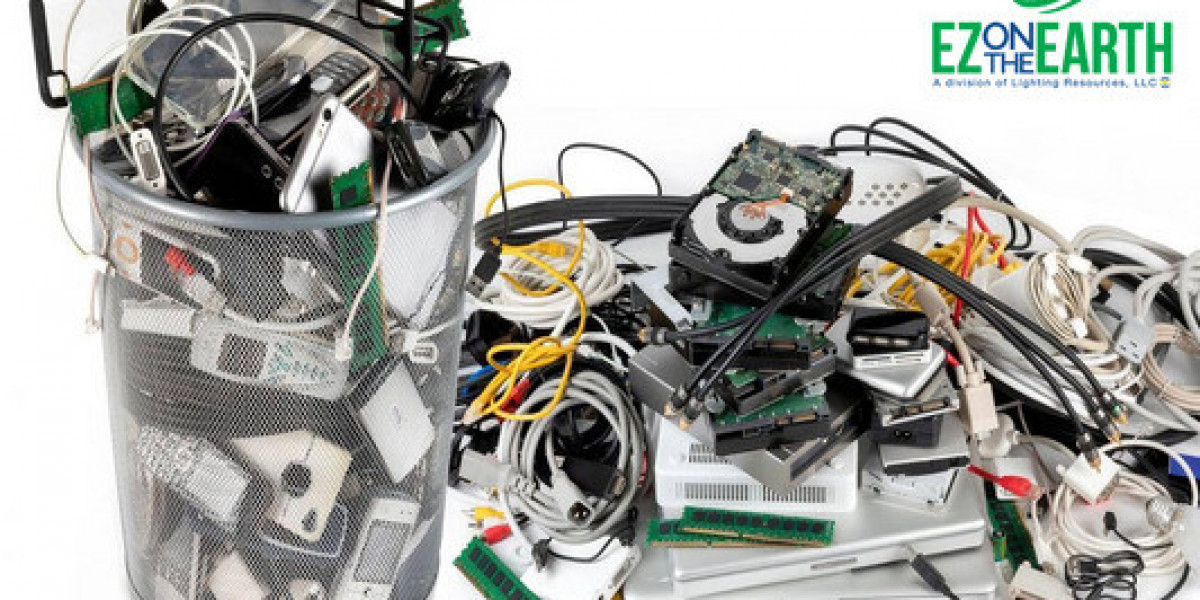In a world increasingly driven by technology, electronic waste (often referred to as e-waste) has become one of the fastest-growing waste streams. E-waste includes any discarded electronic or electrical device, ranging from mobile phones and computers to household appliances and industrial electronics. As the lifespan of electronic devices continues to decrease, more gadgets find their way to the waste pile. Effective recycling of e-waste is essential to manage these discarded items sustainably, recover valuable materials, and mitigate the environmental impact. In this guide, we explore everything you need to know about electronic waste recycling, its importance, processes, and benefits.
Why is Electronic Waste Recycling Important?
The rapid increase in electronic waste presents several challenges:
Environmental Impact: E-waste often contains hazardous materials, such as lead, mercury, and cadmium, which can seep into the soil and water, contaminating ecosystems and posing health risks to humans and animals.
Resource Conservation: Electronics contain valuable metals like gold, silver, and copper. Recycling e-waste allows us to recover these materials, reducing the need for mining, which has its own environmental and societal impacts.
Economic Opportunity: The recovery and reuse of precious materials from e-waste can provide an economic boost. Properly recycled e-waste not only conserves resources but also creates jobs and supports the green economy.
Types of E-Waste and Their Composition
Understanding the types and composition of e-waste helps in recycling them efficiently. Common categories include:
Small IT and telecommunication devices: Mobile phones, tablets, and GPS devices. These often contain precious metals like gold and palladium, alongside plastic, glass, and harmful substances.
Consumer electronics: TVs, monitors, and sound systems. They contain valuable metals, including copper, lead, and sometimes mercury.
Large household appliances: Refrigerators, washing machines, and air conditioners, which usually contain steel, aluminum, and refrigerants that need special handling.
Lighting equipment: Fluorescent tubes and lamps, which may contain mercury, posing risks if improperly handled.
Each category has its unique recycling challenges and methods, as these components often require different processes to separate and recover materials.
The E-Waste Recycling Process
The recycling of electronic waste involves multiple steps to ensure materials are safely and efficiently extracted:
1. Collection and Transportation
Proper collection systems are essential to prevent e-waste from ending up in landfills. Consumers, businesses, and municipalities often collaborate in organizing drop-off points or take-back programs where people can dispose of old electronics.
2. Sorting and Dismantling
The initial stage in recycling involves sorting and dismantling electronics. Components that can be reused are separated, while items that require processing, like batteries or circuit boards, are set aside for specialized treatment.
3. Shredding and Material Separation
Shredding breaks down electronics into smaller pieces, allowing different materials to be sorted. This process includes:
Magnetic separation: Extracts ferrous metals.
Eddy current separation: Sorts non-ferrous metals like aluminum.
Optical sorting: Separates glass and plastic.
4. Recovery of Valuable Materials
After separation, valuable metals like copper, gold, and silver are extracted using advanced techniques like smelting or electrochemical processes. Recovering these metals reduces the need for mining and minimizes the environmental footprint of electronics production.
5. Refining and Purification
Metals recovered from e-waste are purified to meet industry standards, making them suitable for reuse in manufacturing new electronics. This step is crucial to ensure that recycled materials are of high quality and can replace virgin materials.
Challenges in E-Waste Recycling
Despite its benefits, electronic waste recycling faces several challenges:
Complexity of Products: Modern electronics often contain multiple materials and layers, making them difficult to recycle without specialized processes.
Hazardous Substances: Elements like mercury, lead, and cadmium are hazardous and require careful handling to avoid environmental contamination.
Low Collection Rates: Many consumers are unaware of e-waste recycling options, resulting in low collection rates and a high volume of electronics ending up in landfills.
Benefits of Recycling Electronic Waste
Recycling electronic waste has wide-ranging benefits, from environmental protection to economic gains:
Environmental Conservation: Reduces pollution from mining and manufacturing, while protecting ecosystems from toxic substances.
Job Creation: The recycling industry creates jobs across various roles, from collection and dismantling to material processing.
Reduced Energy Use: Recycling metals from e-waste saves up to 90% of the energy compared to mining and processing new metals.
The Role of Technology in Advancing E-Waste Recycling
Innovations in technology are transforming e-waste recycling, enabling more efficient recovery of materials and reducing the environmental footprint of recycling processes. New advancements include:
Robotics and AI: Robots are increasingly used in dismantling and sorting facilities, allowing for more precise material separation and faster processing.
Chemical Recycling: Advanced chemical methods are being developed to extract precious metals safely without toxic by-products.
Data Analytics: By analyzing recycling data, companies can better predict e-waste flows, optimize collection programs, and enhance the efficiency of recycling operations.
How to Participate in E-Waste Recycling
Consumers and businesses play a key role in e-waste recycling. Here’s how everyone can contribute:
Use Drop-Off Points and Collection Events: Many cities organize e-waste collection events or have designated drop-off locations for old electronics. Participating in these initiatives helps divert e-waste from landfills.
Support Take-Back Programs: Many manufacturers and retailers offer take-back programs where customers can return their used electronics for recycling.
Donate Usable Electronics: Donating working electronics to charities or organizations in need extends the life of devices and prevents premature disposal.
Educate and Advocate: Raising awareness about the importance of e-waste recycling encourages others to adopt responsible disposal practices and supports global sustainability efforts.
The Future of Electronic Waste Recycling
The future of e-waste recycling holds immense potential, especially with growing awareness and technological advancements. Sustainable practices, innovative recycling methods, and stricter environmental regulations will likely shape the industry. As companies and individuals continue to prioritize e-waste recycling, the transition toward a circular economy becomes more achievable, where resources are continuously reused rather than disposed of.
Conclusion
Electronic waste recycling is an essential step toward a sustainable future, reducing pollution, conserving valuable resources, and supporting economic growth. By responsibly recycling e-waste, we can contribute to environmental protection, reduce the demand for new materials, and help build a circular economy. With technological advances and growing public awareness, we have the tools to address this growing challenge effectively.






